FCPS Elementary Embraces `Innovation Hour’ to Spur Creativity, Boost Friday Attendance
In a Fairfax elementary classroom on a Friday in December, a pair of girls are teaching themselves sign language, while a boy across the aisle is building a replica of a CH-53 military helicopter and another group of students are making clothes for fairies using a tiny fashion bust.
The students in Ms. Christine Marucchi’s class are part of a unique program that occurs the last hour of the last day of every school week at Wakefield Forest Elementary, ever since Sharyn Prindle became principal in fall 2016. Prindle says she knew from research that giving kids an opportunity to be creative pays off long-term. And she also knew that schools are always looking for ways to improve attendance, especially on Fridays, when absences can be heavy due to family travel plans.
And so, “Innovation Hour,” was born.
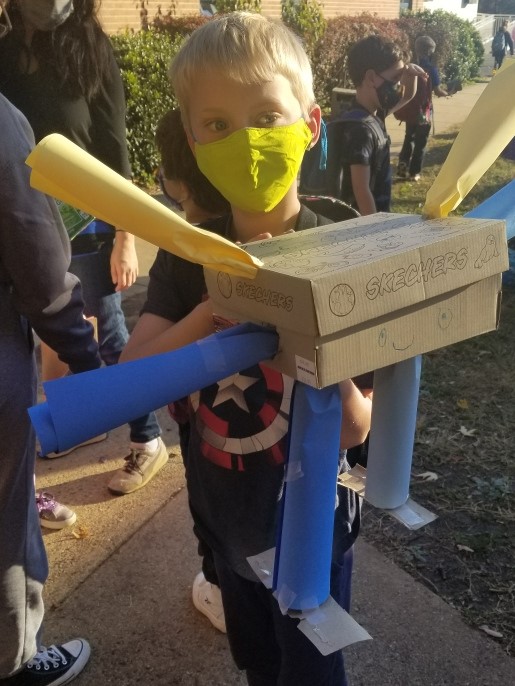
In the program nicknamed a “Prindle special,” students from Kindergarten to fourth grade bring in materials from home, often turning to the recycle bin to bring in egg cartons, empty cereal boxes, plastic utensils, or grab other materials laying around the house like yarn, cotton balls or popsicle sticks. Then, when the clock strikes 2:20 p.m. on Friday, they are free to build, explore and innovate whatever they like from the materials they brought with them.
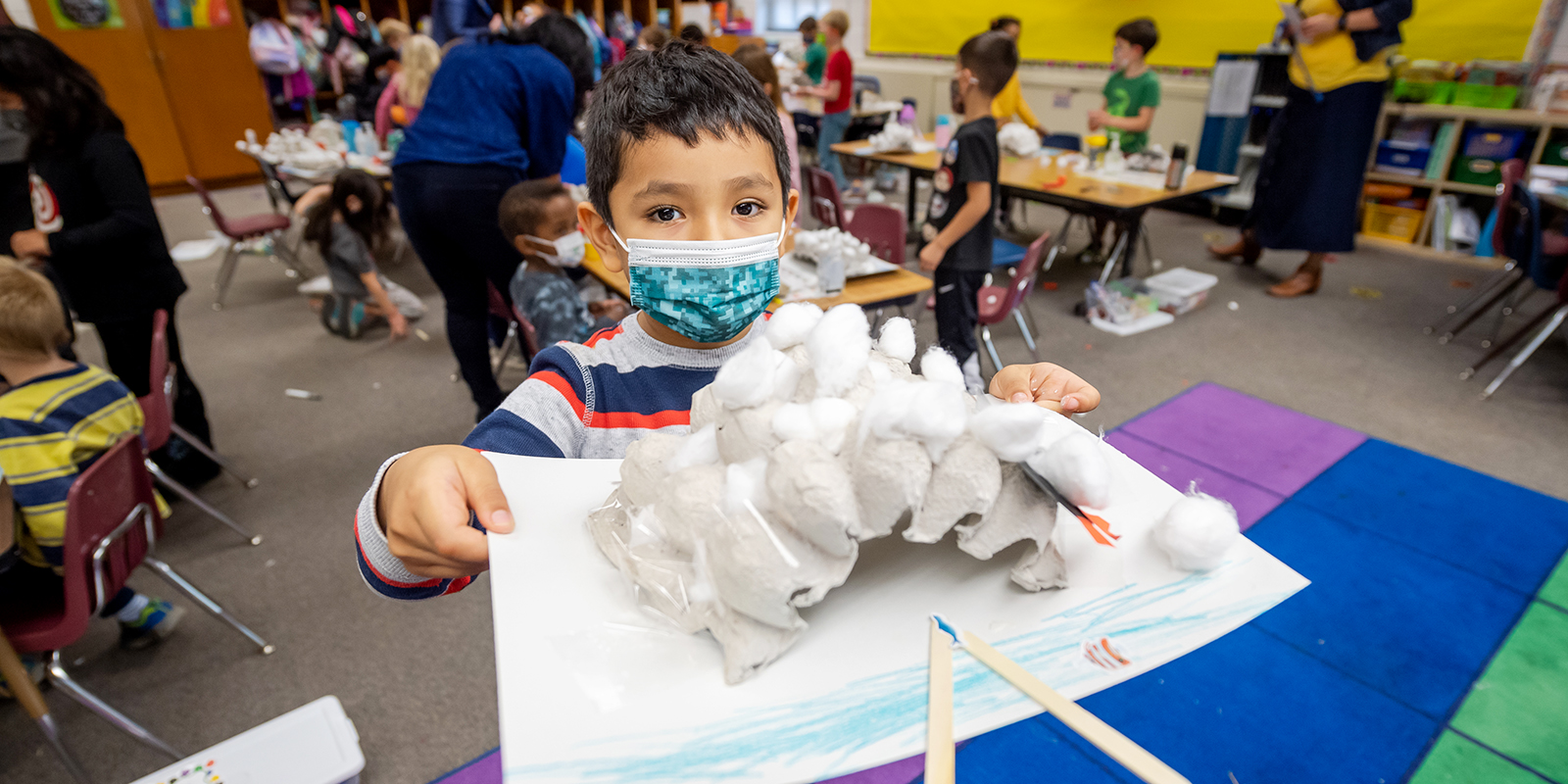
“It was spawned by research around creativity, you hear things nationally about genius hour, a time for creative thinking, and there are very loose expectations, and none of them are curriculum defined,” Prindle said. “We ask our students to think about something they are interested in, how they can grow and develop, and how teachers can support you in getting there. There is a lot of working with other kids, there is a lot of building and hands-on-activity, and a lot of mess making.”
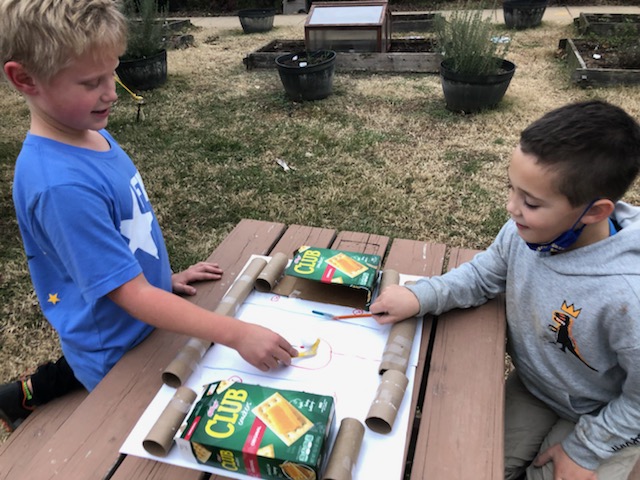
Occasionally teachers will encourage students to follow a particular theme for the day, making a “leaf man” from sticks and leaves collected from their own yards, or an igloo using egg cartons and cotton balls. And other times, teachers will give students the entire time period to pursue their own ideas.
“It all centers on innovation, collaboration, reading books, discussing what creative people do and how innovation starts,” Prindle says. “Sometimes it looks like a lot of chaos, but what comes out of it is really unique and interesting.”
In Ms. Marucchi’s third grade class, Owen Wolfanger and Landon Thomas are building a clock from a paper plate with plastic spoon hands. “Innovation Hour is a time to make whatever you want, and no one can tell you the right steps,” Wolfanger says.
Nearby Tanner Williams is tabulating the results of a survey he says he wanted to conduct to learn more about his classmates’ interests.
“In our class the only direction is to do what you’re curious about,” Tanner, 9, says. “I wanted to know what my classmates were like and I learned they didn’t always have the same favorite things as me,” he says, noting his favorite animal is a shark and favorite color is red, while his classmates overwhelmingly preferred dogs and the color blue.
What Zachary Parker is curious about is helicopters. So he spent his time building a replica of one from straws, plastic cups and other scraps.
“I like aircraft and I wanted to build something that resembles the CH-53 chopper,” Zachary says. “I included torpedoes, depth charges and the landing strips the military has on these.”
Other students in Ms. Marucchi’s class use the time to develop a particular interest or skill: Caroline Briczinski and Vivian Evans have spent several weeks with a sign language primer, working together to try to master the basics of communicating with their hands.
Meanwhile, Annette Wolf and Meena Belay are honing fashion design skills, using tiny dummies as they make “fairy clothes” out of cloth and thread.
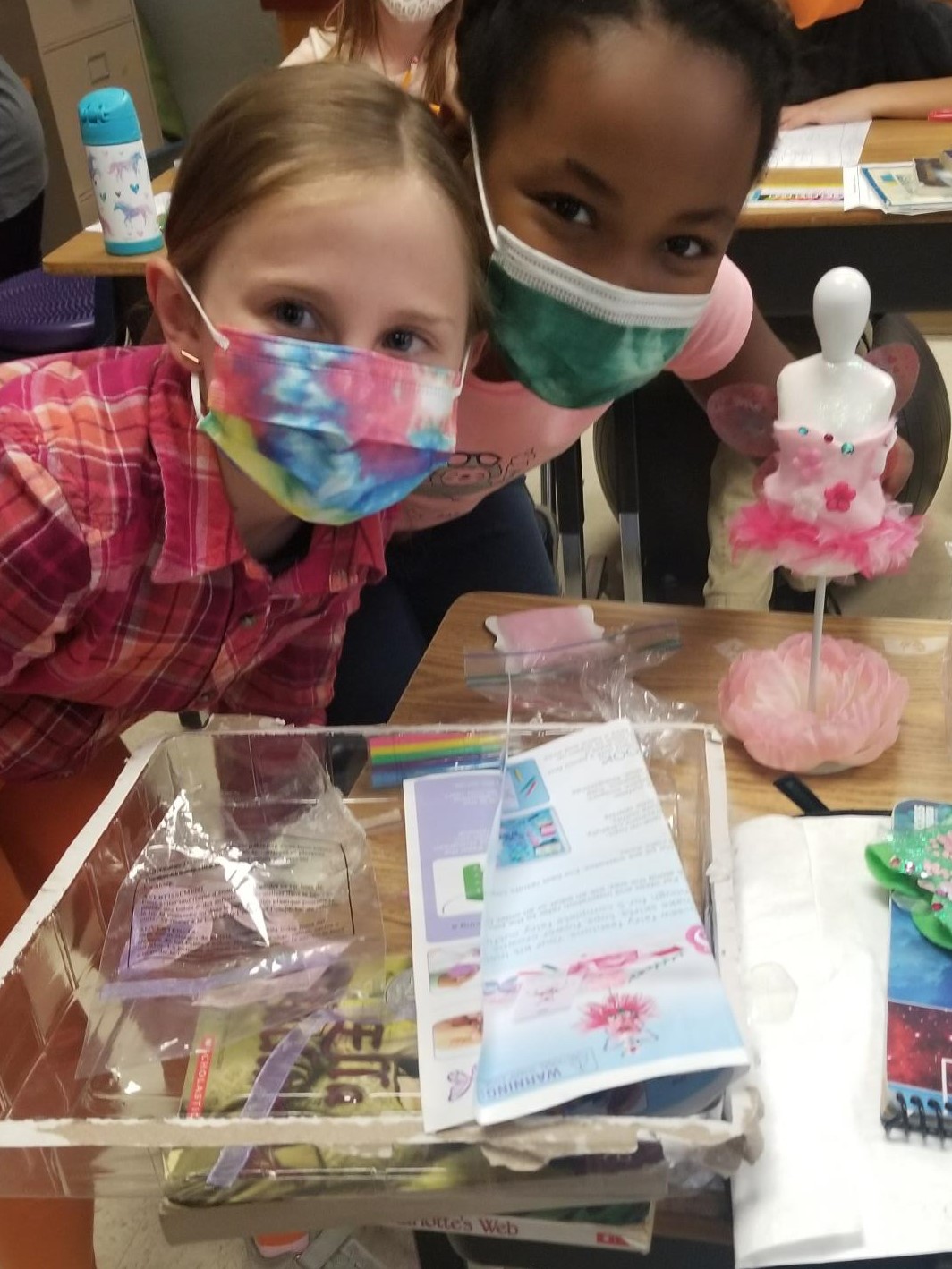
“We are learning that designing clothes is hard,” Meena says.
Different classes and grade levels take different approaches to how they handle the final hour of the Wakefield Forest school week. The fourth graders incorporate a monthly bazaar, called “class store,” where they make their own goods such as jewelry or artwork to sell and trade, or bring items from home they are looking to pass on to others, like stuffed animals, fidget toys or collectibles. The currency are special tickets, given by their teachers for working hard, helping classmates etc.
“Class store teaches me about buying things, selling things, kind of like the basics of how the economy works,” fourth-grader Grant Ballog says.
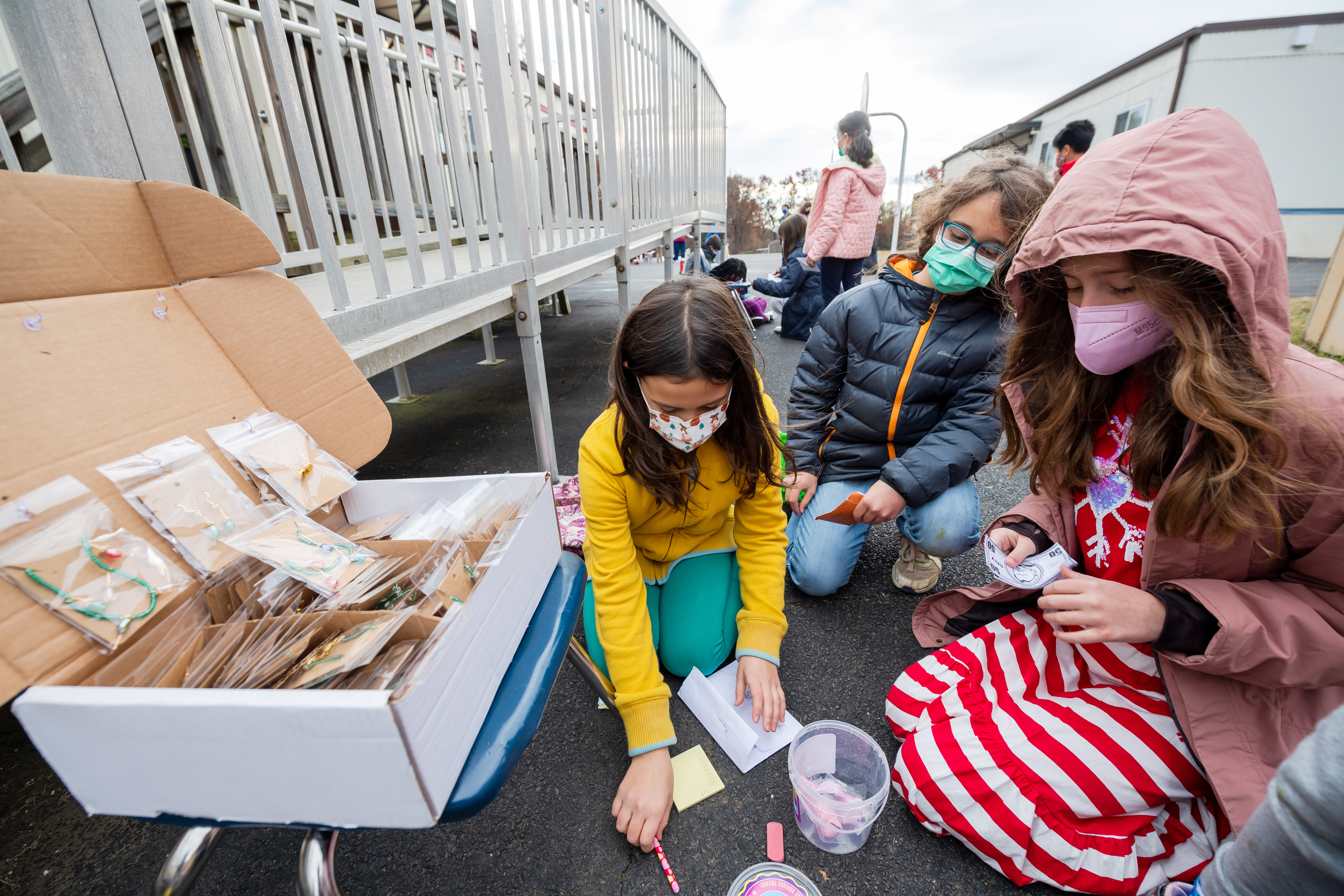
Older students at Wakefield Forest, in fifth and sixth grade, branch out from Innovation Hour and can choose from an array of electives, such as chorus, musical theater, coding, cooking, gardening and fine arts.
The program is fulfilling its mission to inspire students to follow their passions, as well as helping stem Friday attendance lapses, Prindle says.
“We are always hoping families will keep their kids here all week long,” Prindle said. “We did have a lot of Friday absences due to travel and now we hear a lot of reports of kids saying `Oh don’t take me out, don’t pull me out, it’s Innovation Hour.’ Sometimes we even hear families say ‘Oh I had to recreate it at home, my kids were so upset about missing it.’”